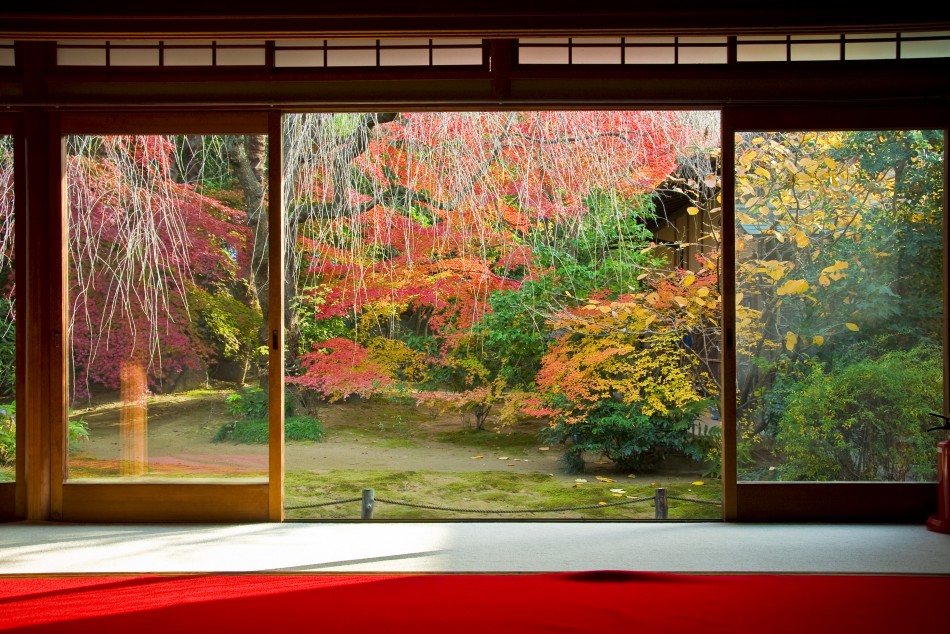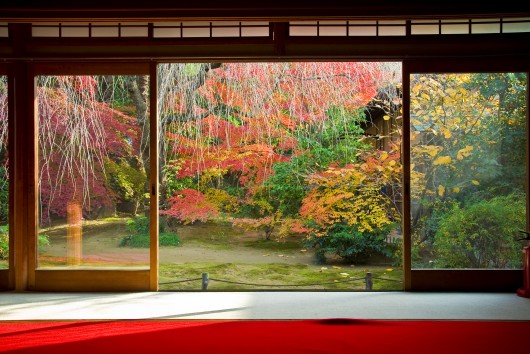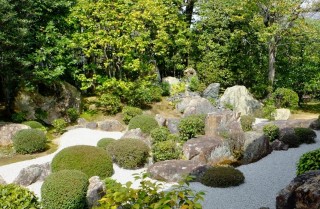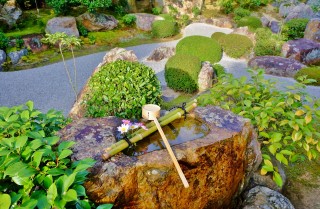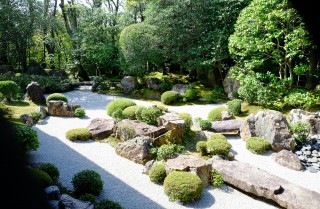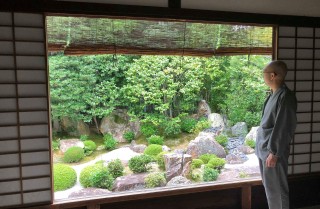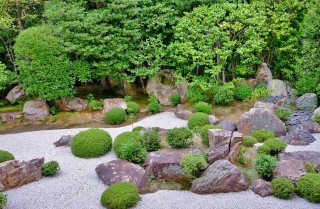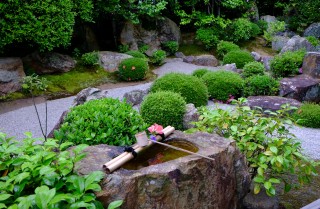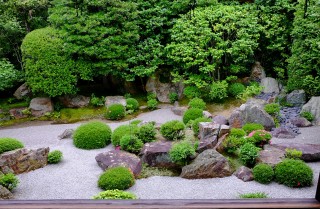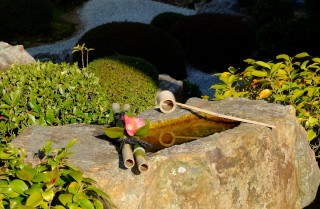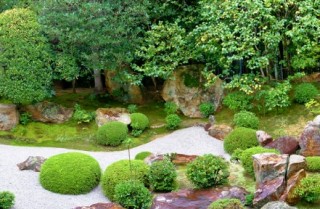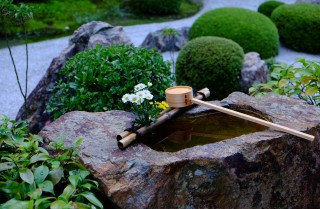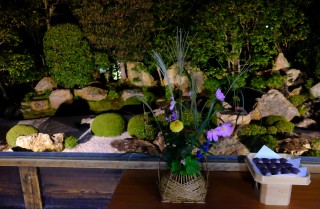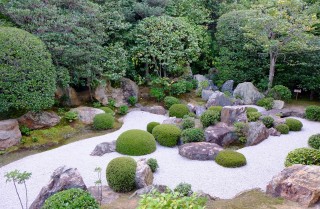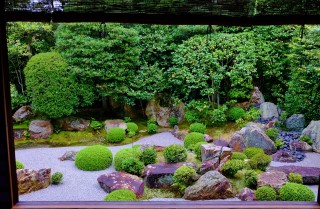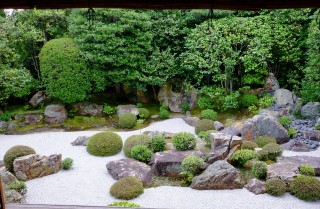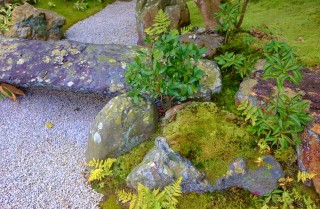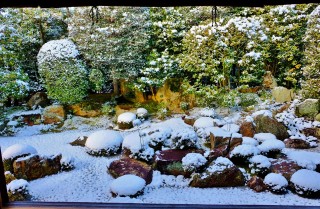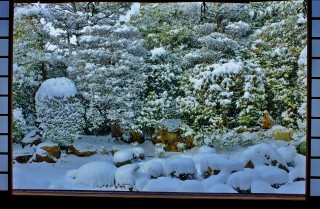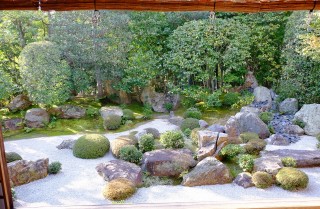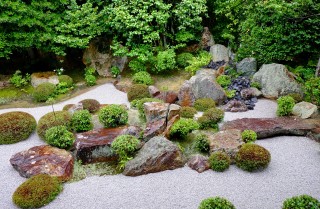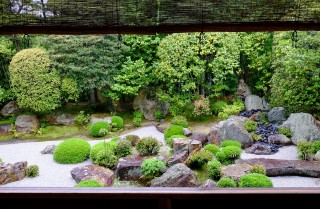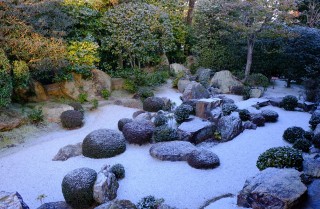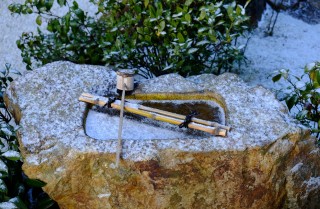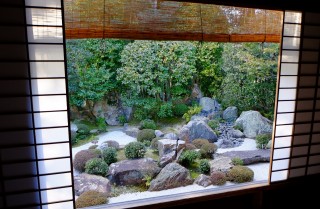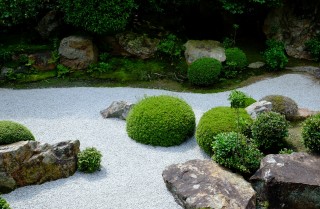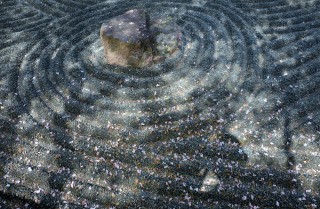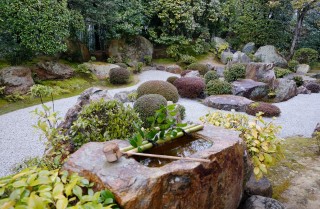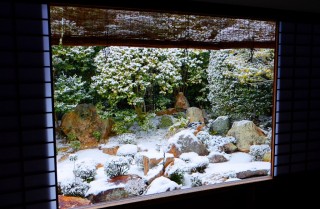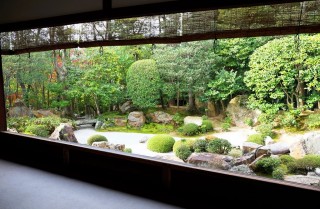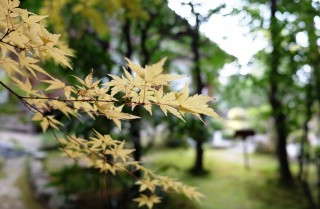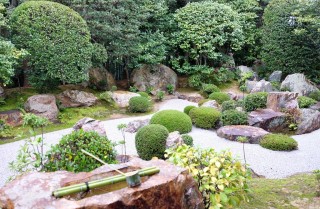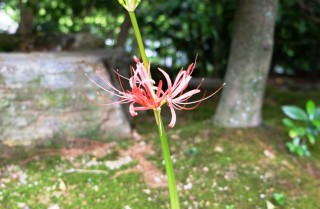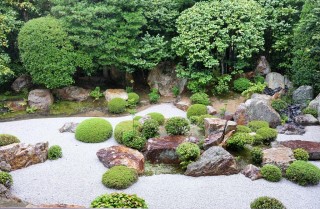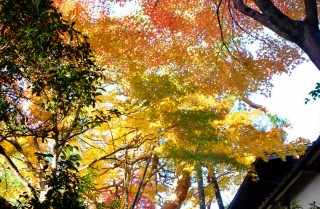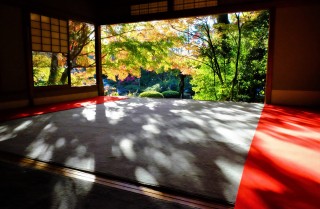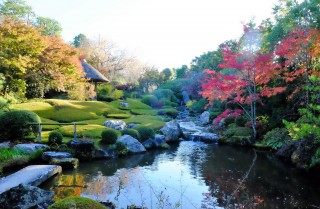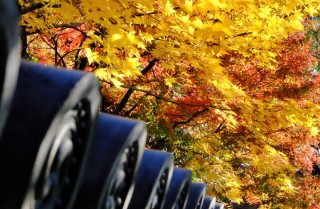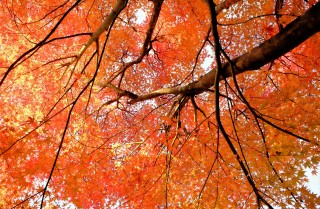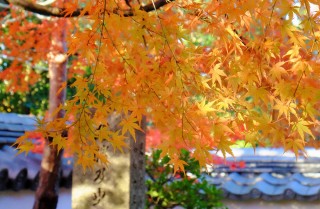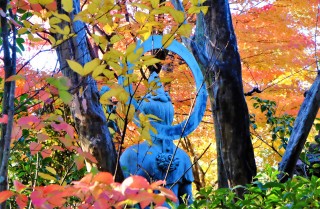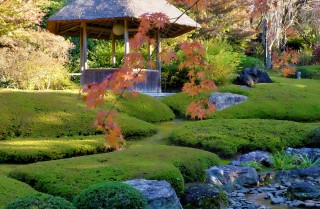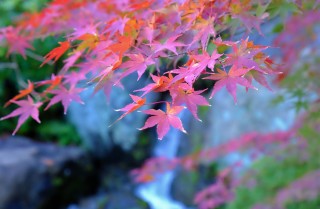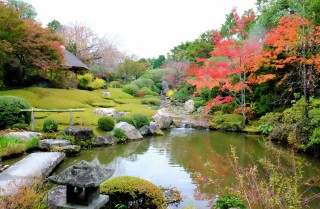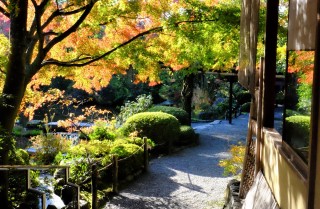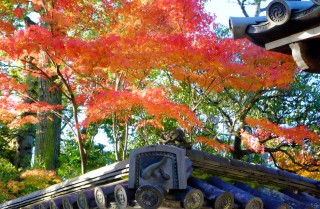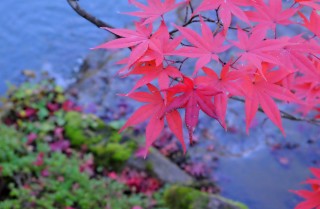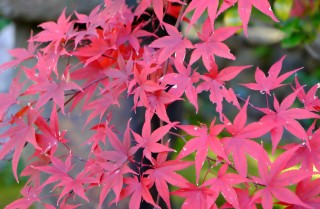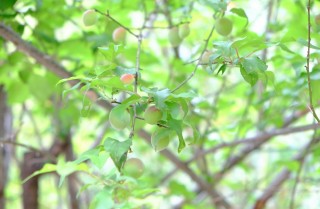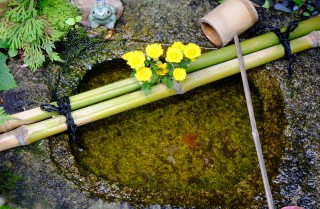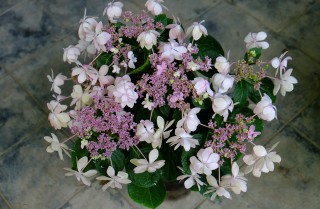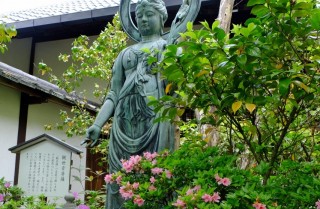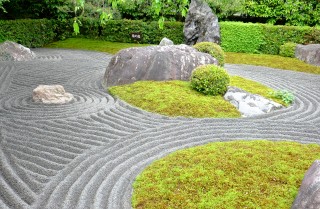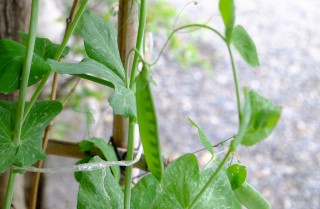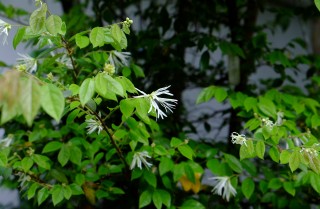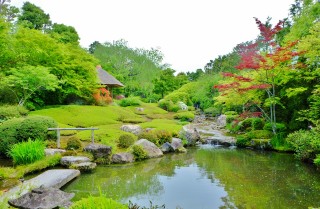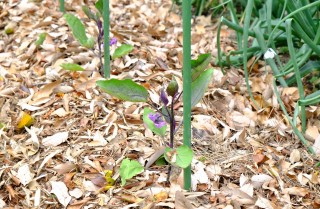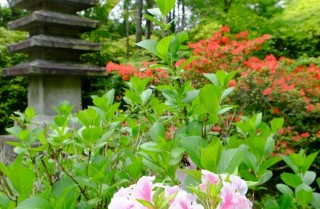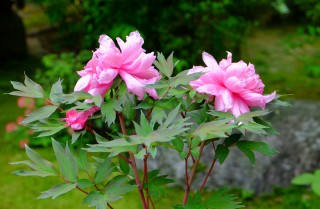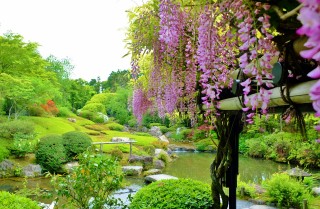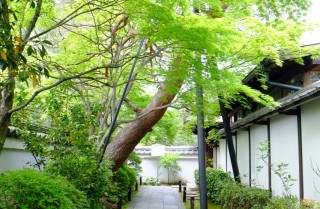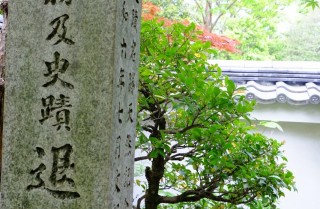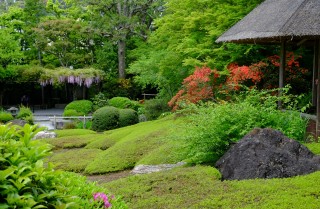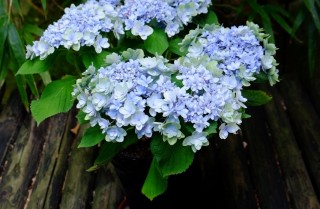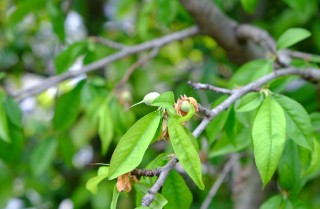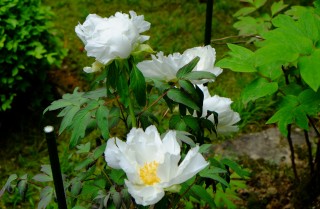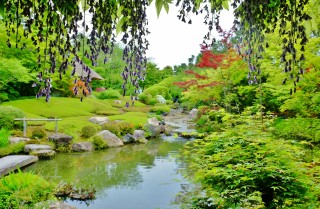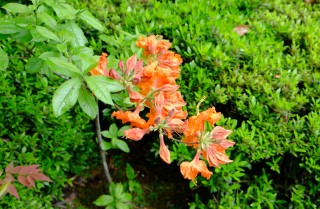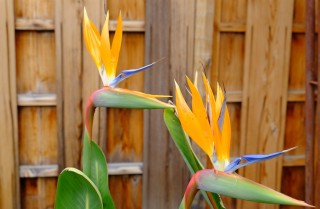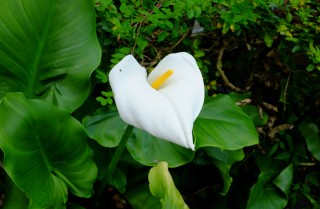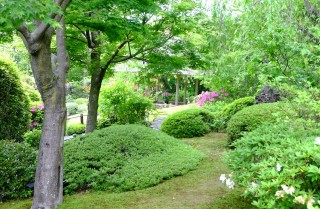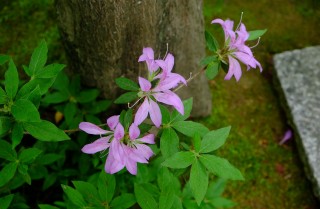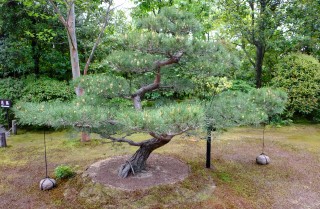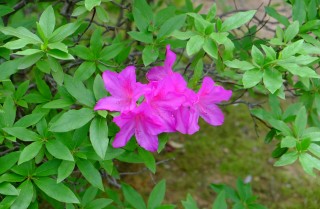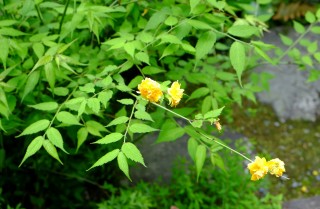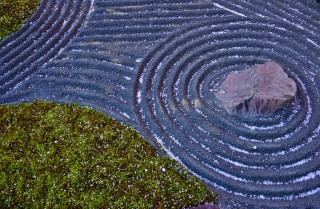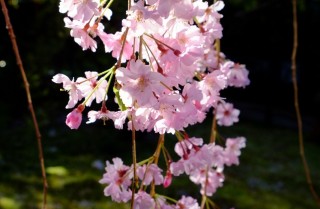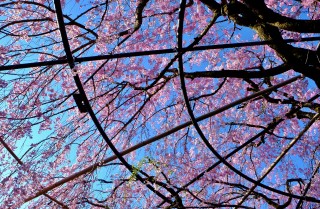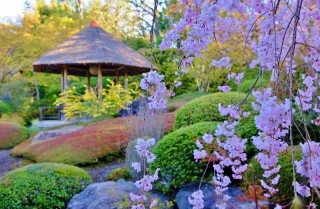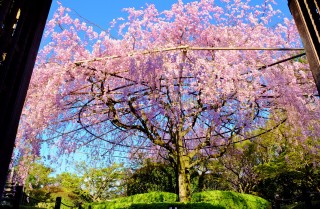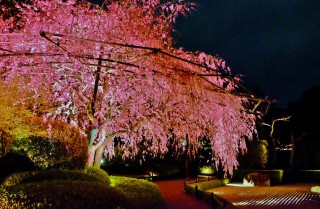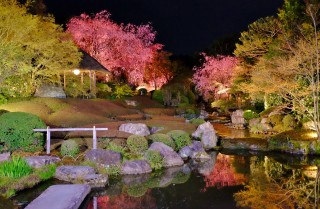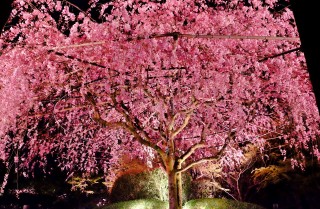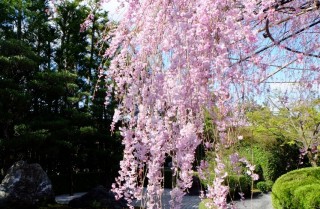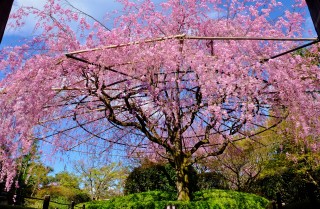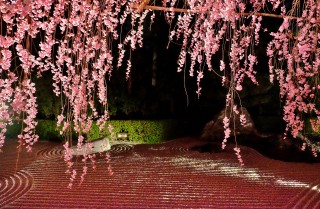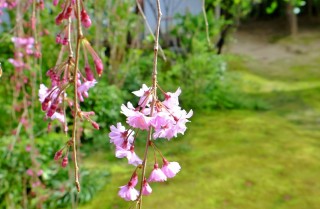Highlights
Motonobu no Niwa (dry landscape garden)
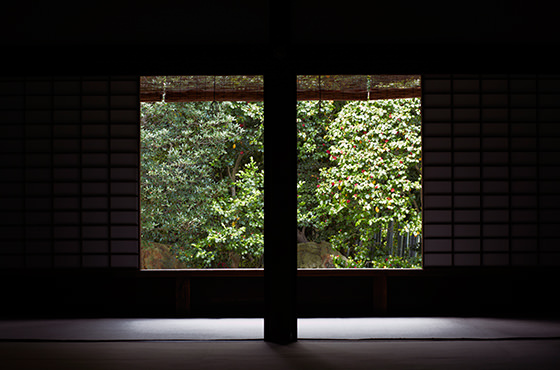
Motonobu Kano, the Master of Zen as well as a painter of the Muromachi period designed this dry landscape garden about 450 years ago. To this day, it has remained as graceful and elegant as a picture. The scenery of the garden stays the same all year round since it mainly consists of evergreen trees such as camellia and Japanese pine trees. At the time it was built, Narabigaoka Mounds were used as part of the integral composition of the garden, which helped add depth and dynamism to it.
Pebbles and a pointed rock placed in the central part of the garden symbolize a waterfall and Horai Island –one of the five mythical Chinese islands in which immortals were believed to live. Motonobu’s Garden seems rather pictorial and feels reachable, which empathizes the unique factor that a painter created this garden.
Dry landscape gardens were commonly created as part of Hojo (head priest’s residence) of Zen Buddhist Temples. The reason behind the development of such dry landscape gardens as part of Hojo is that they could play a role as a means to represent not only nature such as mountains, rivers and oceans but also the entire universe within the limited space.
Motonobu Kano was a master of painting in the late Muromachi period and established so-called Kano-style, which was originated by his father, Masanobu Kano.
It is believed that this three-dimensional garden was created when Kano Motonobu was in his 70s at the peak of his maturity and was meant to express one of his paintings. The fact that the creation of the garden was the painter’s final work makes it all the more unique.
Pebbles and a pointed rock placed in the central part of the garden symbolize a waterfall and Horai Island –one of the five mythical Chinese islands in which immortals were believed to live. Motonobu’s Garden seems rather pictorial and feels reachable, which empathizes the unique factor that a painter created this garden.
Dry landscape gardens were commonly created as part of Hojo (head priest’s residence) of Zen Buddhist Temples. The reason behind the development of such dry landscape gardens as part of Hojo is that they could play a role as a means to represent not only nature such as mountains, rivers and oceans but also the entire universe within the limited space.
Motonobu Kano was a master of painting in the late Muromachi period and established so-called Kano-style, which was originated by his father, Masanobu Kano.
It is believed that this three-dimensional garden was created when Kano Motonobu was in his 70s at the peak of his maturity and was meant to express one of his paintings. The fact that the creation of the garden was the painter’s final work makes it all the more unique.

